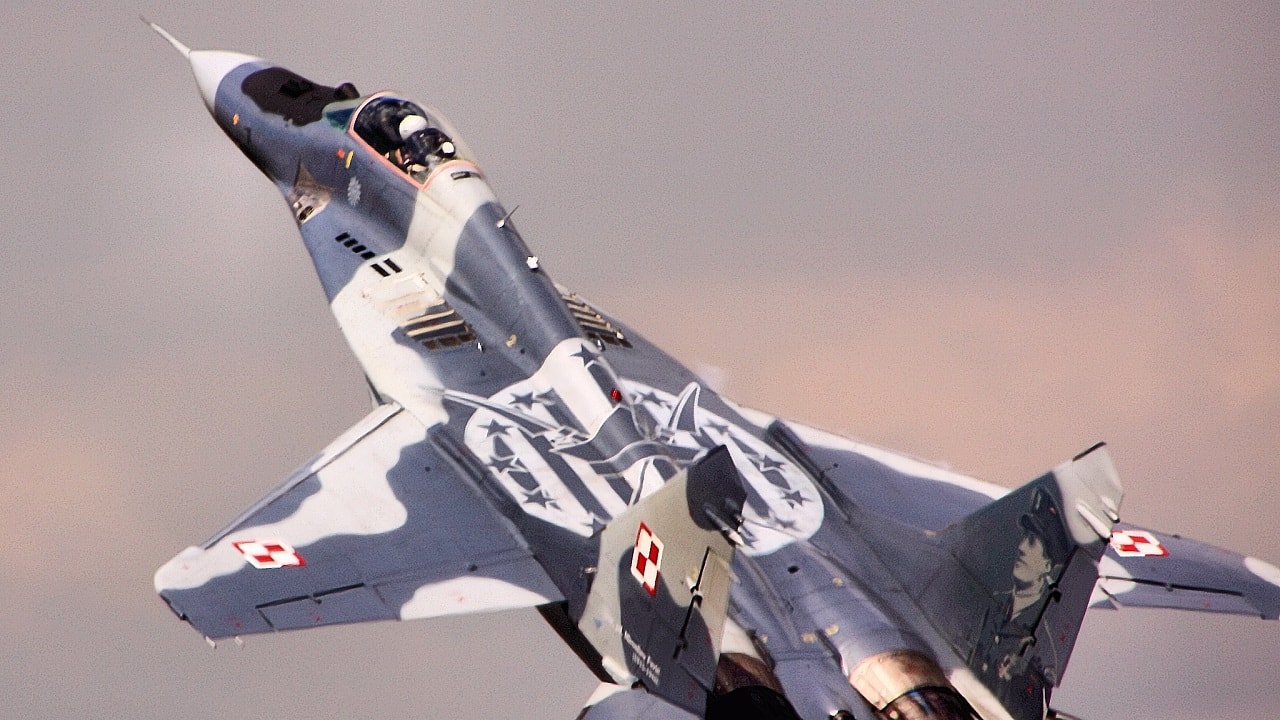It’s not the most modern aircraft, but the MiG-29 Fulcrum is the stud horse in Ukraine’s corral of fighters. Mostly stymied in its attempts to get newer fighters from the United States and NATO, Ukraine has had to make do with the Fulcrum. The Ukrainians are flying an updated version of the fighter called the MiG-29MU2, but only one MiG-29 is believed to have been given a full upgrade.
Kyiv celebrated this fighter-bomber during Ukraine’s Air Force day on Aug. 7. A video of the airplane appeared on social media and impressed military analysts with its clear lines and its suite of radar-guided and heat-seeking missiles. The airplane’s external fuel tank also enables better range.
The Ukrainian air force was upgrading a number of MiG-29s to the MU2 standard before the war started. After the invasion, work slowed down, as can be expected when intense fighting calls for all hands to be available to maintain the existing fleet of fighters. Further, Russia reportedly destroyed the Lviv State Aircraft Repair Plant during a missile attack in March. Since this is where the upgrade work took place, the Ukrainians may remain limited to one MiG-29MU2, with its improved electronics, bombs, and missiles.
Much Improved Close Air Support Abilities
The MiG-29MU2 can be armed with precision-guided air-to-surface missiles for close air support against ground targets, rather than depending on the older unguided rockets and cannon fire. This may be its current role, if it is in fact flying missions. The airplane can also carry “drop and forget” KAB-500Kr TV-guided bombs. This 1,000-pound munition has an armor-piercing warhead to destroy hardened targets such as concrete bunkers.
The Ukrainians worked on the MU1 and MU2 upgrades in part because of lessons they learned from fighting against separatists in Eastern Ukraine. They knew a better fighter-bomber would be needed if Russia invaded.
Dmitry Matrunchik, the director of the Lviv State Aircraft Repair Plant, said, “Last year, flight design tests were successfully completed. This year, the still ongoing state trials have begun, the final completion of which is planned in 2022. We hope that according to their results, the MiG-29MU2 will be adopted.”
The MU1 Is Also a Decent Upgrade
The Ukrainian air force has around 50 MiG-29s. Eight of those are MU1s that have an updated satellite navigation system and a better radar for longer-range interception of enemy airplanes and missiles – the planes have a 62-mile search range. The MU1s carry an updated threat database and new electronic countermeasure capabilities.
The Ukrainians have probably lost 11 MiG-29s during the war with Russia, and some of these were probably MU1s. They have, however, proved to be adept repairmen. One MiG-29 was shown with shrapnel holes and a renovation job that looked like it took parts from another downed airplane.
By now Ukraine thought its air force would be flying fighter planes donated by other countries. North Macedonia may yet give Ukraine Su-25 jets. That would be some help. But sometimes you have to go to war with what you have. It would be nice if Ukraine could have completed additional MU2 upgrades to take advantage of that aircraft’s improved air-to-ground capabilities. At least Kyiv can depend on the air force to keep its MiG-29s flying with some innovative repair work and maintenance. An invasion and a bloody war can inspire support crewmen to work wonders to allow more airplanes to wage battle.
Now serving as 1945’s Defense and National Security Editor, Brent M. Eastwood, PhD, is the author of Humans, Machines, and Data: Future Trends in Warfare. He is an Emerging Threats expert and former U.S. Army Infantry officer. You can follow him on Twitter @BMEastwood.

